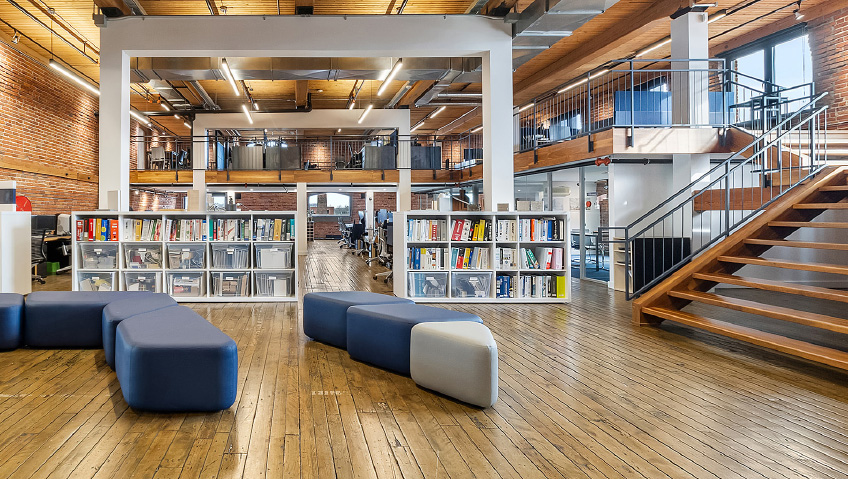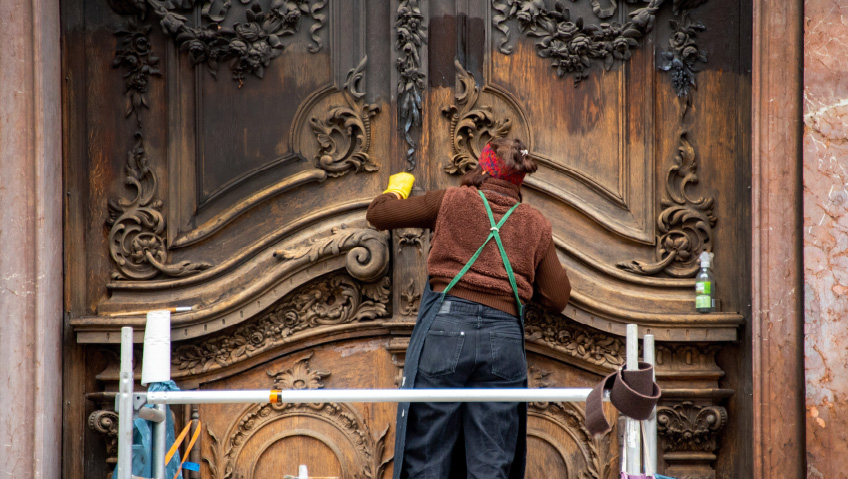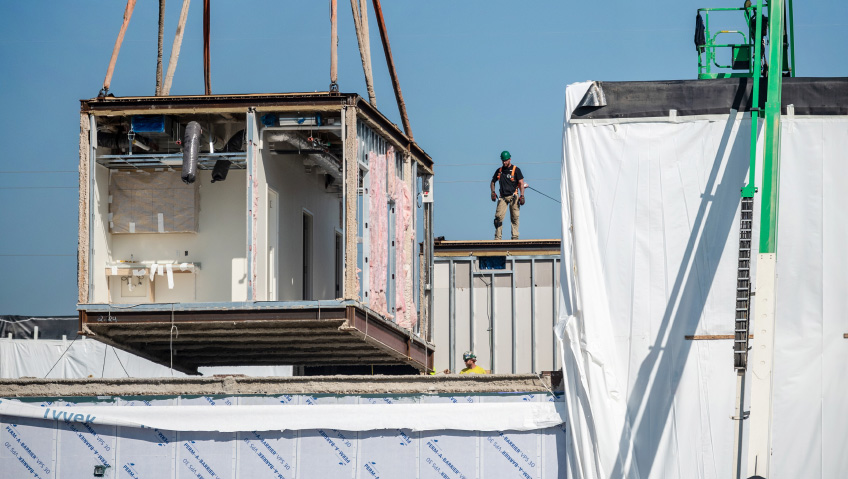DMA Architectes has been active in its home of Montreal, Quebec since 1957, and in the firm’s considerable lifetime, it has served a diverse clientele with strong architectural knowledge and resources.
Senior Architect and Partner, Philippe Ashby, appreciates that such a longstanding firm continues to evolve and build on its capabilities, adding three new partners since we last spoke in 2021 and never resting on its laurels. These new partners, he says, bring experience in design, construction, technology, and the technical side of architecture, all of which exemplify the work that DMA does. Moves like these showcase the firm’s vision of keeping its expertise broad and building on a strong foundation.
Mr. Ashby tells us that DMA has gained a bird’s-eye view of the architecture field in its near-70 years in business. With a team of more than 40 individuals, the company excels in institutional, commercial, and cultural work, and specializes in rehabilitation projects including heritage properties and the unique considerations they bring.
The team’s collective knowledge base includes not only this rich technical expertise but also the robust processes needed to better itself and its industry, with particular attention paid to documentation. Since its founding, the company’s reputation has been built on its methodology, tenacity, knowledge of Montreal’s built environment, and avant-garde creativity, which all come together in a comprehensive offering with the data to back it up. At DMA Architectes, this data is put to good use for the benefit of the awarded project while taking into account potential future needs and the long-term value of the project—key considerations with heritage properties in particular. As Mr. Ashby explains, “It’s important for us to engage the client relationship and ensure they get full service for the work we’re putting into place.”
Guided by such rigorous internal processes, DMA is able to tackle projects of varying scopes and scales. The company is currently collaborating with PRA and NFOE on a three-phase project for Polytechnique Montréal involving expansion and redevelopment work, and important rehabilitation work is also being done with NORR at the National Printing Bureau, a Classified Federal Heritage Building in Gatineau.
Indeed, Montreal has proven to be a fruitful place for DMA Architectes to call home. Mr. Ashby explains that many of the city’s buildings were built in the 1970s and 1980s, which means many of them are now in need of maintenance and renovation work; this work is promising but it is also complex. Many of these projects involve occupied commercial buildings, which means that the firm must be wary of the particular needs of the tenants within, as well as those of the client.
Mr. Ashby says that DMA has the technical know-how to see and approach these projects from all angles, looking at restoration, rehabilitation/conversion, or replacement as needed. Each approach comes with distinct impacts, technical challenges, and benefits, so when it comes to projects, DMA looks carefully at the finer details. For instance, in light of the rise of modern office towers in the ’70s and ’80s, DMA has developed an expertise in glazing, window, and curtain wall interventions that come with specific challenges, expertise that is coming in handy in the company’s present work on two major rehabilitation projects.
“It is important to be able to accompany our client with the technical support required but also to engage in important questions regarding logistical issues such as how the work will impact tenants, how the job site will be organized, and how the work will take place,” explains Mr. Ashby. Of the two current projects in question, both impose very different impacts on the sequence of work and therefore the tenant impact; one is employing more traditional methods (lifts and platforms) and one a newer, enclosed system (Upbrella). The Upbrella system provides an enclosure that offers a controlled environment which facilitates the work and inspections and improves control over the schedule. However, the work and services need to be adapted to the different conditions that are chosen for a project.
As an employer, DMA aims to curate a similarly collaborative environment in the workplace. Overall, the firm maintains a horizontal approach wherein everyone is encouraged to participate and share their thoughts on various aspects of projects. This is key to creating a sense of openness and belonging within the team.
DMA has also recently moved into new offices, a move done in the aftermath of the COVID-19 pandemic to get its people back to business as usual in an enticing work environment. “Collaboration is important in our field of work,” says Mr. Ashby, and younger staff members benefit from working in proximity to their team and their mentors. One never stops learning as an architect, says Mr. Ashby, and there is no better way to do so than in person.
The company makes this mentoring easy with in-house presentations on projects, software, and lessons learned. “It’s important to feel like you’re growing within the firm,” says Mr. Ashby. He tells us that architects, traditionally, are generalists in terms of technical ability; although DMA encourages its team members to develop their own specialties, everyone enjoys and benefits from a variety of work. By continually building on their skill sets and expanding their knowledge bases, everyone at DMA is in a position to meaningfully contribute in a variety of ways, and the work is that much more rewarding and stimulating.
The current architectural market, Mr. Ashby says, is in a state of flux, which poses certain challenges but has also allowed DMA to adapt its approach. There have been significant budget cuts in institutional projects in the education sector (historically, a large segment of the firm’s work), bringing market shifts for the firm and the industry. A number of projects are presently on standby, and meanwhile, DMA is shifting focus to its other markets such as building restoration and commercial buildings.
Although DMA is meeting with success in exploring diverse projects, there are still a lot of unknowns around elements like tariffs and global trade. While some suppliers may not see an impact (such as aluminum suppliers who get their product from Europe), others are affected far more greatly, forcing everyone to adapt to stay competitive.
Mr. Ashby says that, as a firm whose rich and varied expertise sets it apart, DMA Architectes wants to continue building on its strengths and applying them to as many sectors as possible. The team is exploring some new avenues and, as always, enjoying the large-scope projects to which it can contribute as part of a team. Moving forward, DMA will also keep its eye on factors like sustainability and climate change with regard to the role they play in building maintenance. Mr. Ashby says that attention must be paid to the ever-aging built environment, and to protect and preserve these buildings means they must first be carefully analyzed through every lens.
DMA Architectes has always gone the extra mile for its clients, and now, with nearly seven decades of experience behind it, the firm continues to evolve with purpose, blending tradition, technology, and teamwork to meet the demands of an ever-changing built environment. This company’s enduring success lies not only in the quality of its work but also in its capacity to adapt, mentor, and anticipate what comes next. As the firm strengthens its leadership, expands its expertise, and deepens its commitment to the preservation of Montreal’s architectural fabric, DMA Architectes remains firmly rooted in the values that have defined it since 1957: precision, collaboration, and an unwavering dedication to building better spaces for generations to come.






